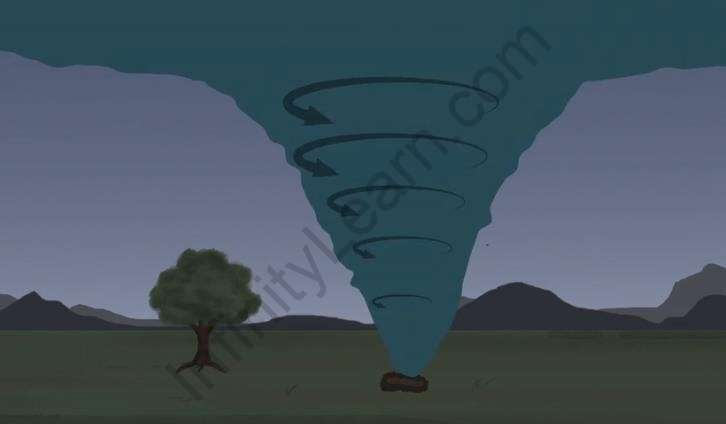Table of Contents
- Tornado – Definition
- Summary
- Did You Know?
- What’s Next?
In the previous segment, we learnt about Thunderstorms and Cyclones. In this segment, we will learn about Tornadoes.
We know that cyclones are huge air masses that rotate in a circular pattern around a strong centre of low atmospheric pressure. The pressure difference inside and outside a cyclone is very huge. The air surrounding a cyclone takes away every possible thing in its way inside the devastating swirl. Sometimes cyclones have a tendency to give rise to a tornado.
What is a Tornado?
Just like a cyclone, a tornado is a rapidly rotating column of air. But the main difference between the cyclone and tornado is that a tornado is a rotating column with one end touched to the ground and the other end in the clouds. It is also important to note that tornadoes may form within cyclones.

Tornado
Here, the cumulative clouds or the collection of clouds become heavy due to accumulation of water drops, snow and hail. A tornado begins from the cumulative cloud and reaches the earth’s surface. The funnel created keeps rotating at extremely high speeds and destroys


